

Damion Smy
Toyota exporting US-built cars to Japan after Trump criticism
3 Days Ago
Isuzu's new 1.9-litre D-Max offers cab-chassis buyers a more affordable option, with lower running costs and a lower price.
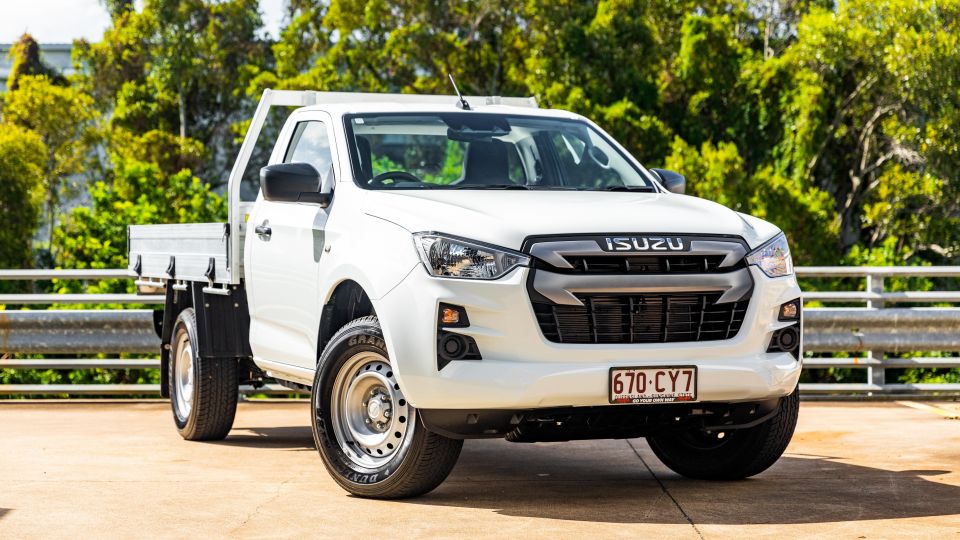
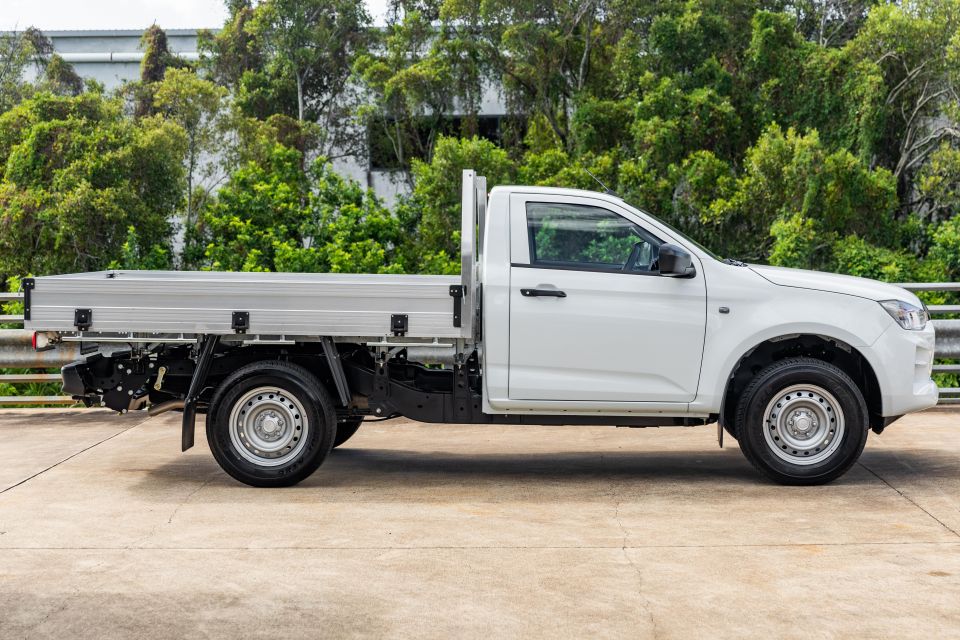

Quickly see how this car stacks up against its competition. Select any benchmark to see more details.
Where expert car reviews meet expert car buying – CarExpert gives you trusted advice, personalised service and real savings on your next new car.
The Ford Ranger might be consistently Australia’s second best-selling ute, but if you look just at 4×2 sales it sits in third.
The indefatigable Toyota HiLux dominates the 4×2 segment, but it’s the Isuzu D-Max that gets the silver medal in sales.
Last year, Isuzu held a 19.8 per cent share of the 4×2 ute segment, around half the HiLux’s but well above the Ranger’s 13.1 per cent share.

Isuzu Ute Australia has been kicking goals with the new D-Max, and it appears to be looking at increasing its hold in the 4×2 ute segment.
A new, more affordable powertrain arrived for 2022 in the shape of a 1.9-litre turbo-diesel four-cylinder engine, available only in the “traffic controller”-spec D-Max 4×2 SX Single Cab Chassis.
That gives fleets and owner operators the option to cut both their upfront costs and their running costs, and gives Isuzu a rival to the likes of the Toyota HiLux Workmate.
The 4×2 D-Max SX single cab-chassis rings up at $32,200 before on-road costs, though it’s one of two D-Max models that currently have a nationwide drive-away deal in place. You can get one for $31,990 drive-away with an Economy Alloy Tray fitted as standard, though Isuzu warns there’s limited stock.
If you want the six-speed automatic like our tester, however, you’re looking at $34,200 before on-roads – and there’s no drive-away deal on offer for the auto.
Keep in mind these prices are without a tray fitted. If you go with one of Isuzu’s four genuine accessory trays, you’re looking at paying between $2470 for the Economy Alloy Tray, fitted to our tester, and $3994 for the Heavy Duty Steel Tray.
The Mazda BT-50, the D-Max’s twin, is also available with the smaller 1.9-litre diesel. In the Mazda, however, you can get the smaller engine across a wider range of variants, including 4×2 and 4×4 dual-cab pickups.
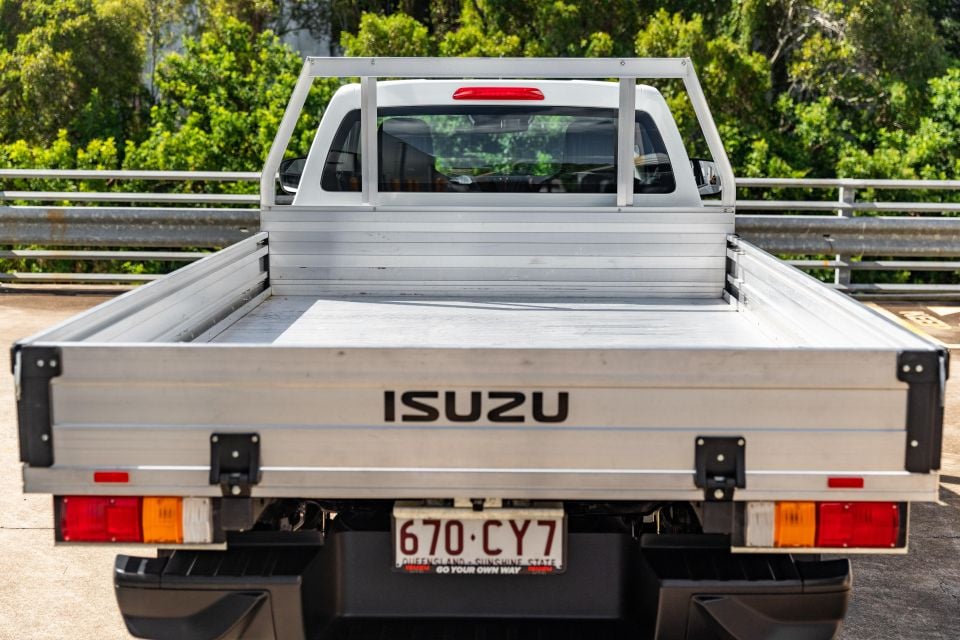
There’s no manual 1.9-litre BT-50 on offer, so you’re looking at $33,850 before on-roads for a BT-50 XS 4×2 single cab-chassis which also boasts some extra kit.
That means you’re looking at almost identical circa-$41,000 drive-away prices based on a Sydney postcode, though Mazda only offers one ‘premium’ tray at $7702.
Toyota’s most affordable HiLux variants, the 4×2 Workmate single-cab chassis models, use a thirstier 2.7-litre petrol four-cylinder engine and start at $24,255 before on-roads. An auto costs an extra $2000, while there’s a diesel Hi-Rider model priced at $29,465 list but available only with a manual.
The new Ford Ranger is priced at $35,930 before on-roads in 4×2 XL single cab-chassis auto guise.
The Mitsubishi Triton GLX 4×2 single-cab chassis is priced at $29,240 before on-roads with the manual or $31,490 with the auto, while the Nissan Navara SL 4×2 single-cab chassis is priced at $32,300 before on-roads in turbo-diesel manual guise or $34,800 list as a twin-turbo diesel auto.
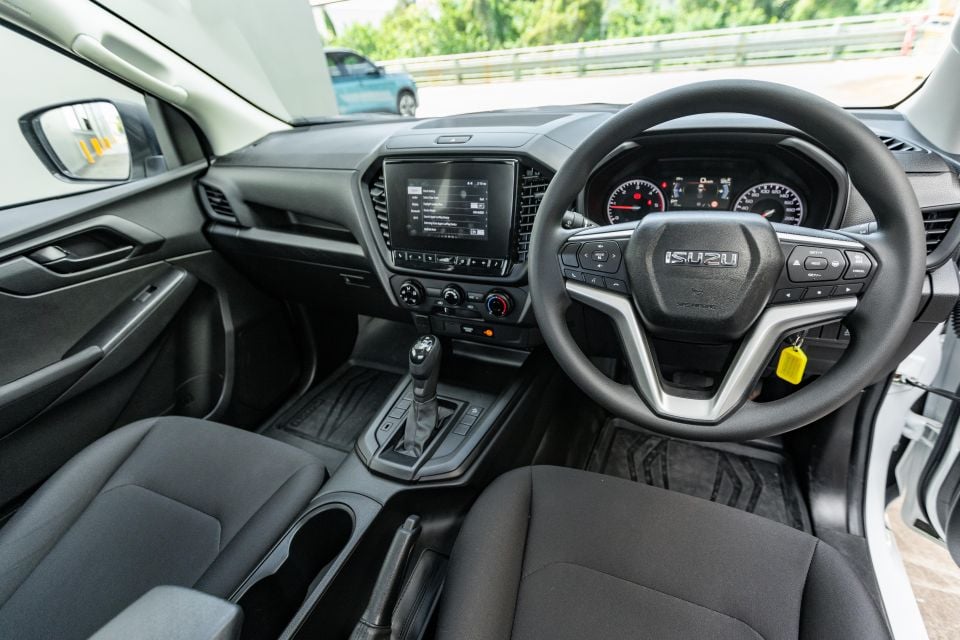
Buy your new car without the stress. It's fast, simple and completely free.

Great service from Travis and team, second time I have used this business would not hesitate to recommend them to anyone
Craig C.
Purchased a Ford Ranger in Sunshine Coast, QLD
CarExpert helped Craig save thousands on his Ford Ranger, now let us save you on your next new car.
Find a dealThe D-Max’s cabin gets the fundamentals right, though there are some clear indicators you’re in the base model.
For example, there’s no cover for the dash-top storage recess, nor are there dual gloveboxes. The 7.0-inch touchscreen screen also features a thick black bezel around it.
Said 7.0-inch screen might have represented a step up from the previous D-Max, as well as older systems in rivals like the Triton and HiLux, but it’s been made out-of-date instantly by the screen in the new Ranger.
Even in base XL guise, the Ranger has an impressive 11-inch display and also boasts wireless Apple CarPlay, while further one-upping the D-Max with wireless Android Auto.
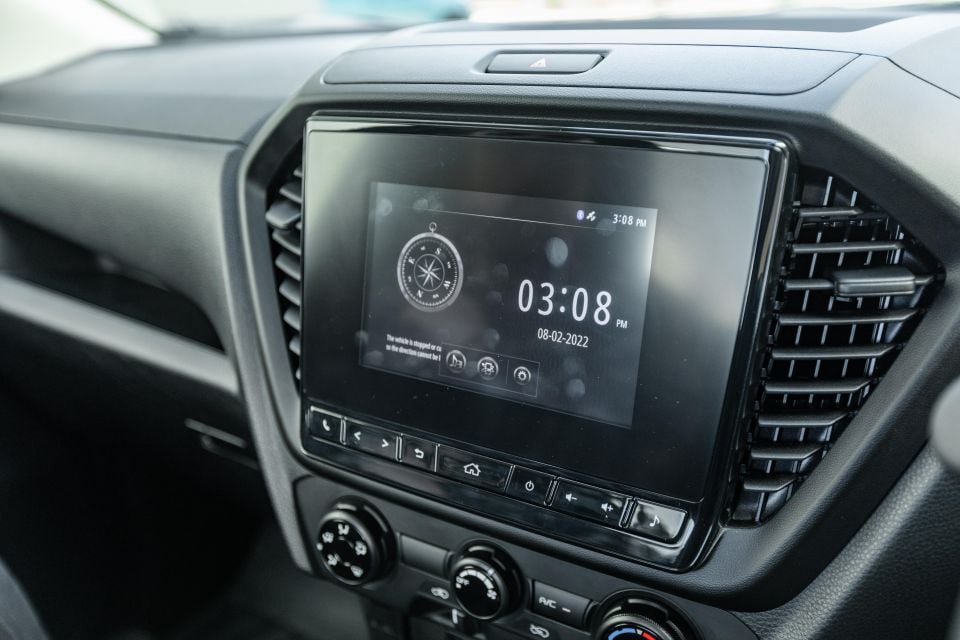
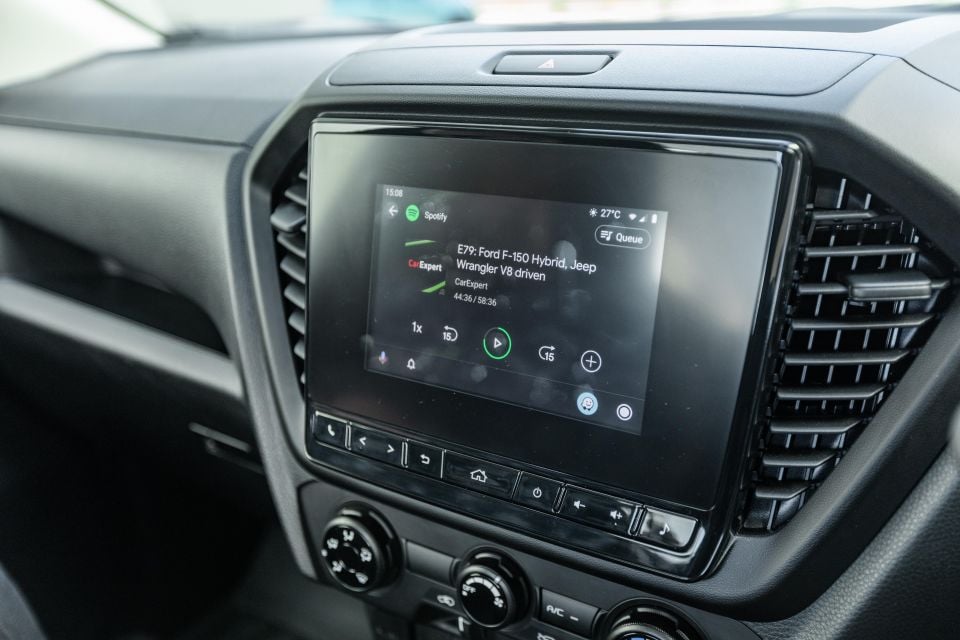
The Isuzu’s 7.0-inch screen has handy physical shortcut buttons underneath for functions like volume adjustment, though they’re a bit small and can be hard to press when you’re bouncing down the road.
The single USB-A and 12V outlets are also on a poorly lit part of the centre stack.
These criticisms aside, there’s still plenty to like about the D-Max’s interior.
The dashboard has a straightforward layout, feels well screwed together and made of hard-wearing materials.

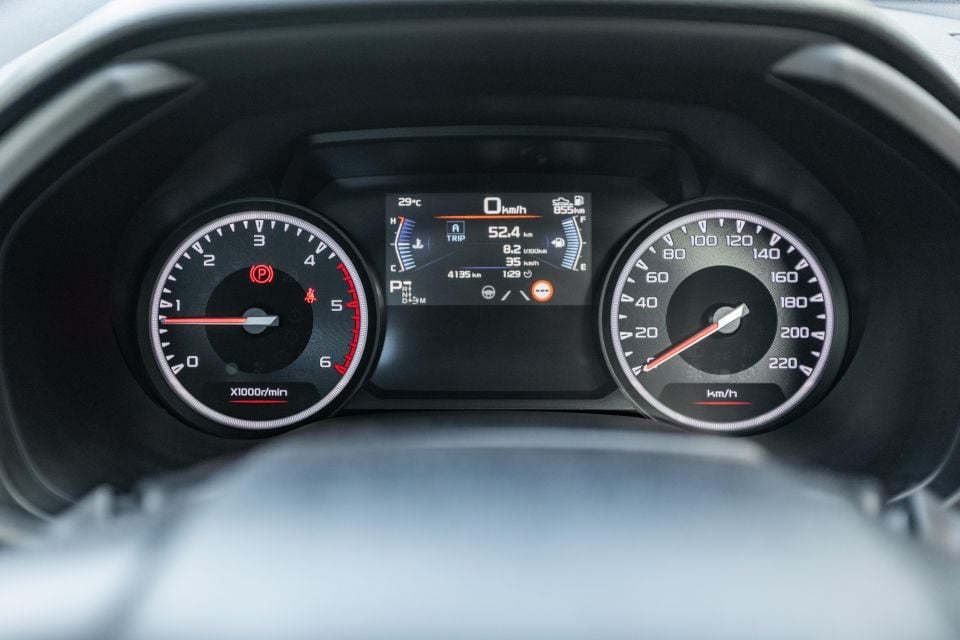
The seats are particularly cushy and comfortable but also prove supportive, while the climate controls are mounted nice and high and are therefore easy to reach.
Even the urethane steering wheel isn’t too rough to the touch – the ostensibly leather-wrapped wheels in some HiLux models feel worse.
The analogue instruments are clear and easy to read, though there are no physical dials for fuel level and engine temperature. These are instead depicted on the display between the dials, which has plenty of information but could be larger.
While there’s only one glove compartment, there’s a decently sized centre console bin, bottle holders in the doors that can fit a 1L bottle, and storage behind the front seats.
There are also clever pop-out cupholders on either end of the dashboard, while there are two cupholders in the centre console. One is round, one is square, so regardless of your preferred brand of iced coffee you’ll be accommodated.
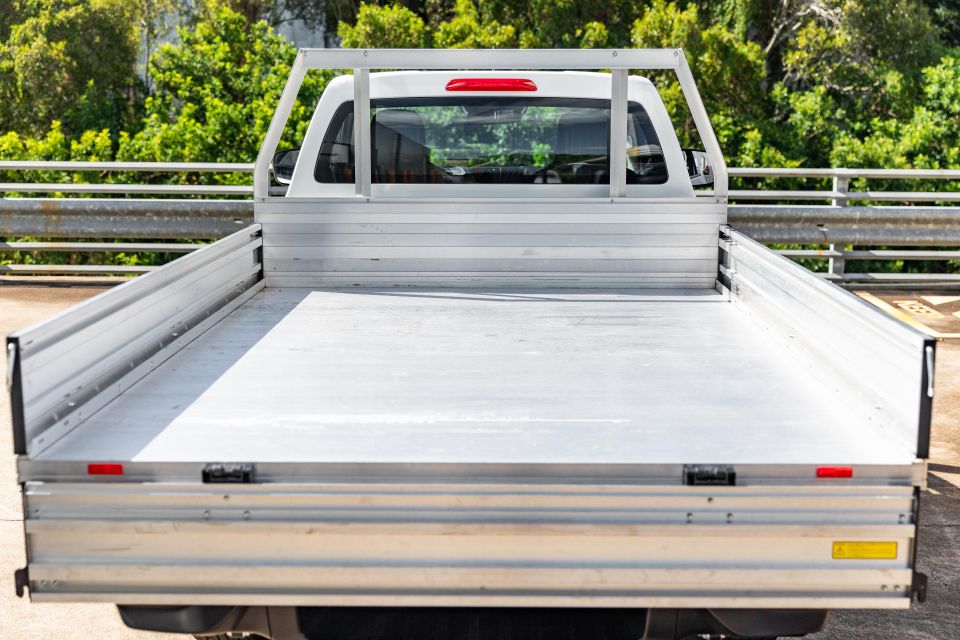
Less clever is the useless niche where other D-Max models have a second glove compartment. It’s not rubberised and it can’t be concealed; the shelf at the base of the centre stack also lacks a rubberised base, though it’s harder for items like smartphones to slide out of here.
The only glove compartment fits little beyond the owner’s manual.
Moving out of the cabin, with Isuzu’s genuine accessory tray body there’s a load area measuring 2550mm long and 1777mm wide.
Even the most affordable tray features 18 internal tie-down points and quick-lock dropsides, while other trays include tail light protectors, rear window protectors, and headboard tubes.
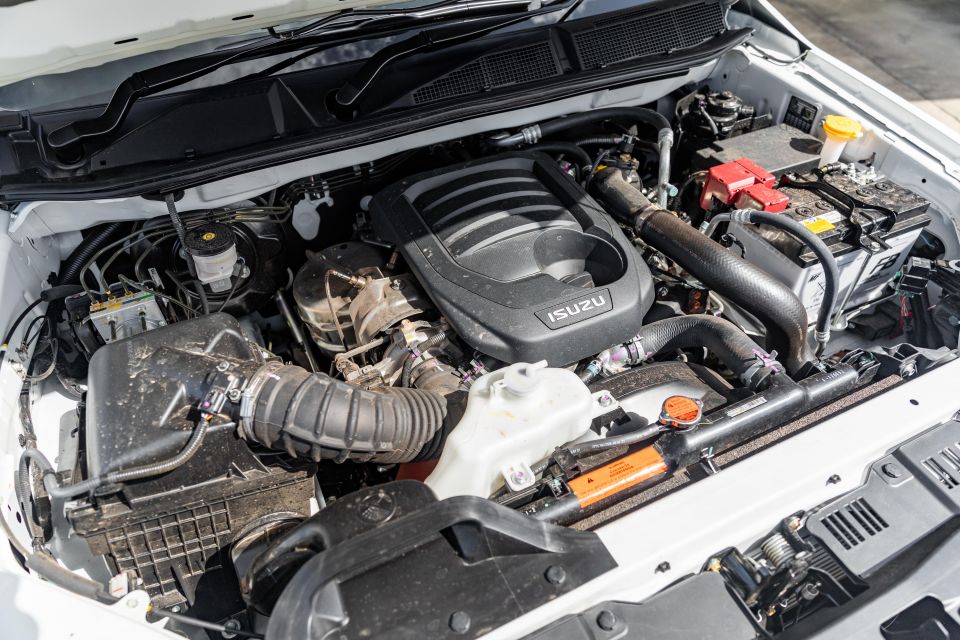
The new 1.9-litre four-cylinderturbo-diesel produces 110kW of power at 3600rpm and 350Nm of torque between 1800 and 2600rpm.
That’s 30kW and 100Nm down on the 3.0-litre engine, albeit at the same peaks.
Payload is 1380kg with the automatic transmission, with the manual bumping that up to 1405kg. That payload figure is higher than that of the single-cab chassis Triton (1150kg), Navara (1256-1282kg), Ranger (1271kg) or HiLux (1210-1260kg).
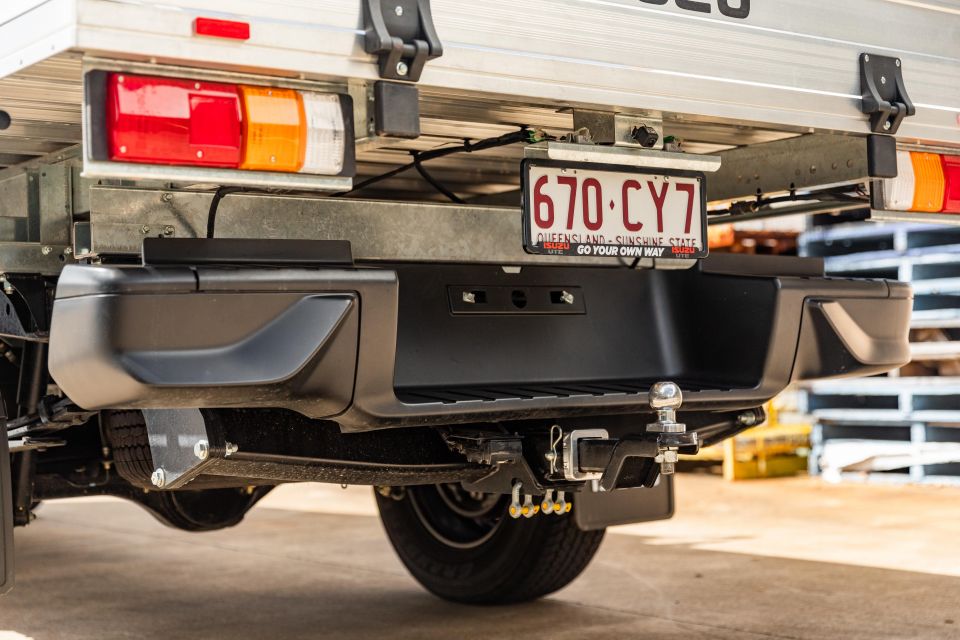
Gross vehicle mass (GVM) is 3000kg, while gross combined mass (GCM) with the auto is 5500kg.
Maximum towball download is 280kg, while braked towing capacity with the auto/1.9-litre combo is a full 500kg less than 3.0-litre models at 3000kg; opting for the manual reduces this by a further 200kg.
Either way, that’s more than a HiLux petrol or Triton diesel (2500kg) but less than a HiLux, Navara or Ranger diesel (3500kg).
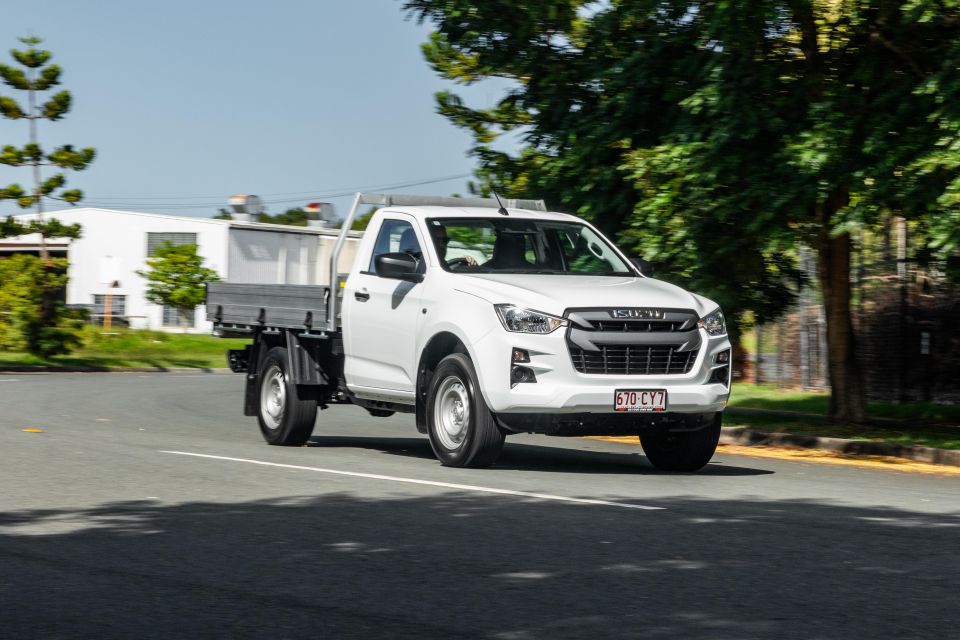
The new 1.9-litre doesn’t feel too sluggish, and it’s decently quick off the mark. Driving it back-to-back with the larger 3.0-litre will likely betray its lower outputs, but in isolation it’s a pleasantly flexible powertrain.
It won’t deafen you under heavy acceleration, though it has the typical clattery diesel soundtrack one would expect of an entry-level ute.
There are no untoward vibrations to shake the cabin, and while there’s a bit of wind noise at highway speeds plus the puttering of the diesel engine, there’s little wind noise around the mirrors and the cabin is acceptably quiet at triple digits.
The six-speed automatic works well with the 1.9-litre, with smooth and well-timed shifts.
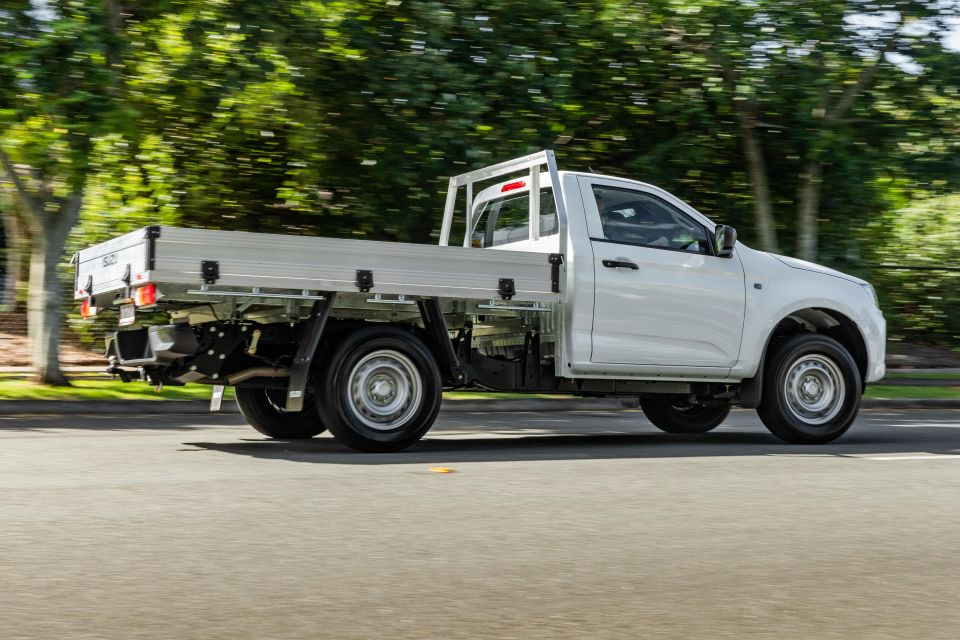
As with most single-cab utes, the term ride quality is an oxymoron and should perhaps be put in inverted commas.
Put in as little as 300kg in the tray, though, and it’s like popping a muscle relaxer – it really takes the edge off. All the pitching and heaving and the generally unsettled nature of the D-Max’s ride, even over smooth roads, is toned down considerably with some weight over the rear axle.
There’s still some fidgeting to the ride and the occasional muffled jolt over larger bumps, but bringing the D-Max closer to its payload would likely improve ride quality further.
Steering is nice and light, which makes piloting the D-Max very easy. There’s a lot of give and not much feel, but the D-Max is easy to drive in tight urban confines.
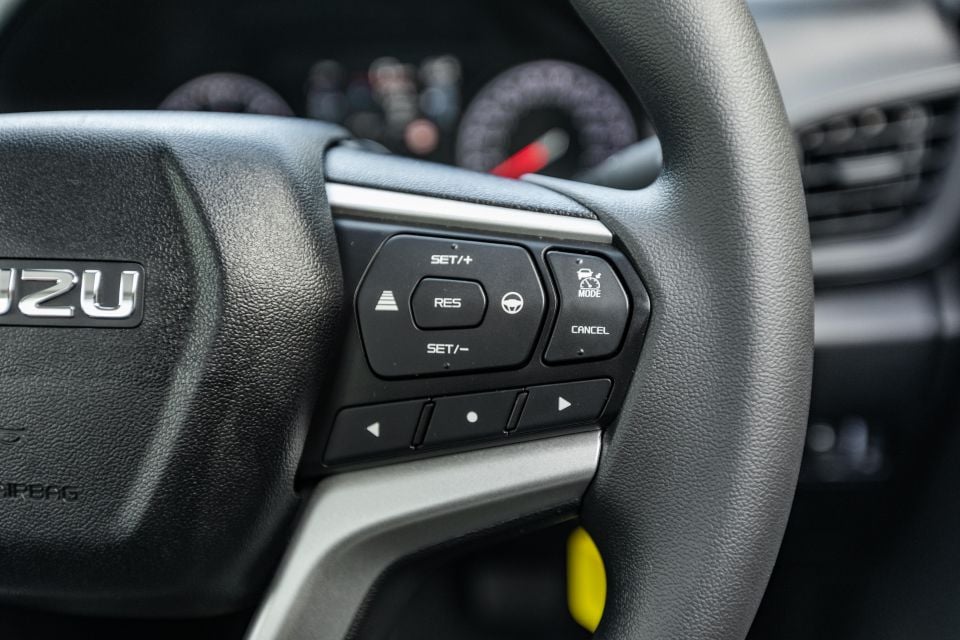
While the D-Max’s cabin is otherwise comfortable, the lack of an appropriately sized dead pedal grates – it’s as though the D-Max was designed for people with tiny feet, and certainly not the typical tradie wearing work boots.
Isuzu was ahead of rival brands in rolling out a full suite of active safety and driver assist technology on its base ute, and the technology works well.
The combination of adaptive cruise control and Isuzu’s lane-keep assist system makes highway driving effortless, with the latter doing an admirable job keeping you in your lane.
Isuzu also responded to buyer criticism by adding a button to the steering wheel for 2022 that turns off the various lane support systems, should you find them irritating.
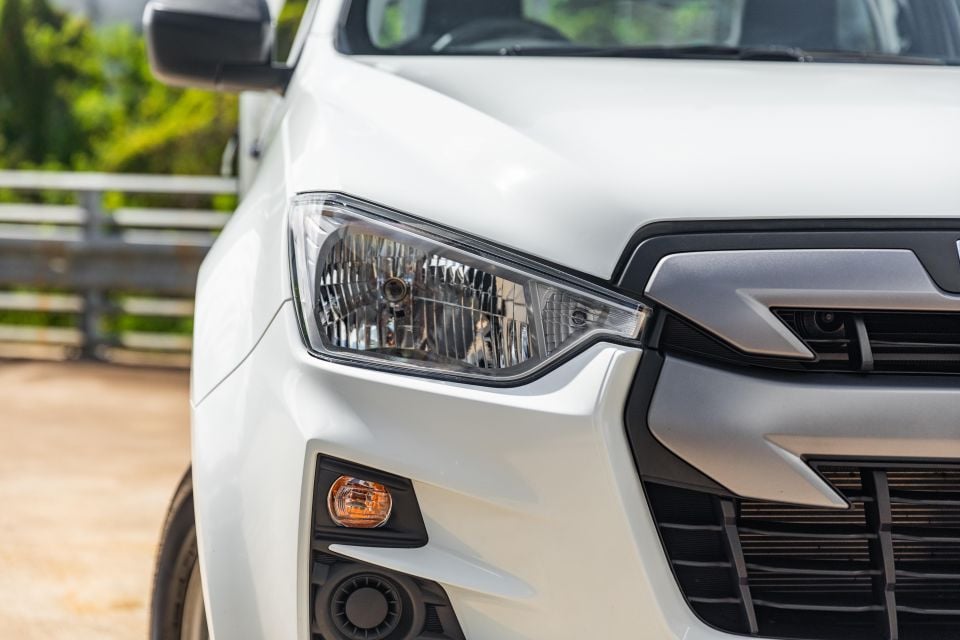

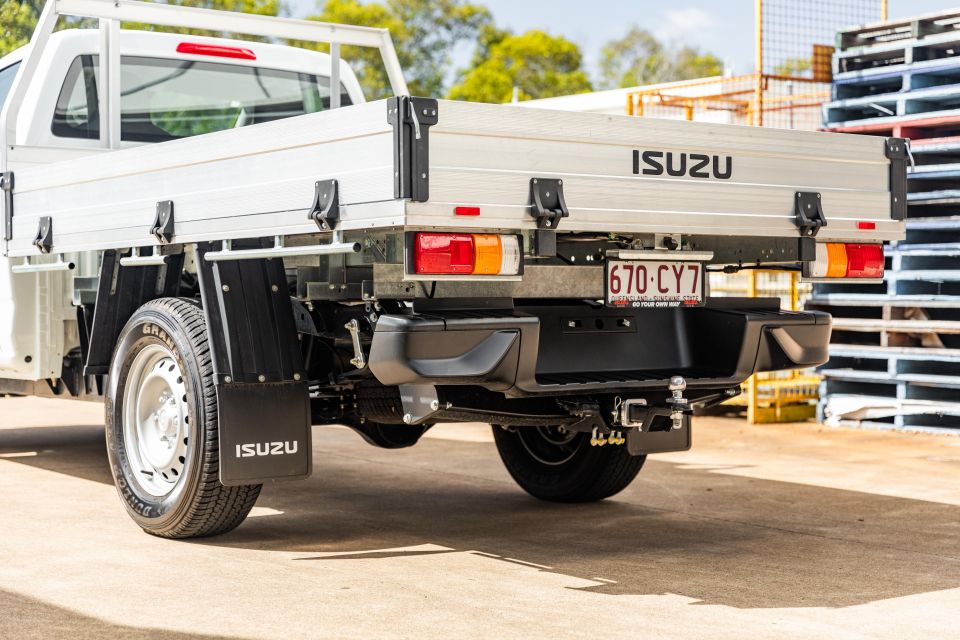

D-Max SX highlights:
The BT-50 XS is slightly better equipped, swapping halogen headlights for LEDs and featuring carpeted floors.
The D-Max has a couple more speakers than a Triton GLX or HiLux Workmate but otherwise its level of comfort and convenience equipment is about the same. Where it distinguishes itself from those rivals is in safety equipment.
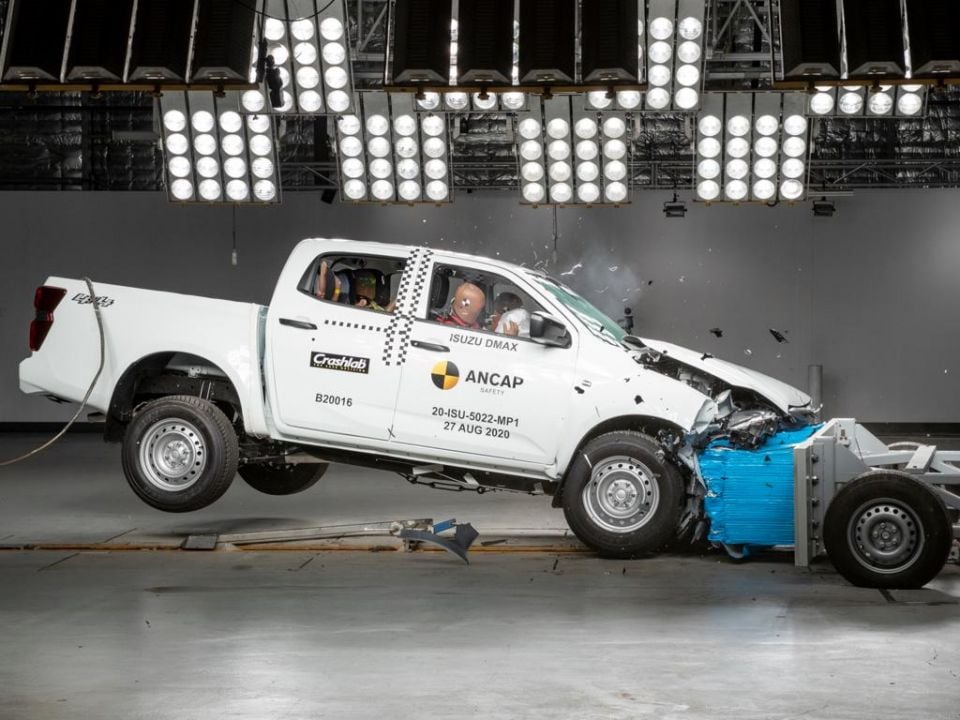
Where expert car reviews meet expert car buying – CarExpert gives you trusted advice, personalised service and real savings on your next new car.
The Isuzu D-Max was tested by ANCAP in 2020 and earned a five-star safety rating.
That rating was based on an adult occupant protection score of 83 per cent, a child occupant protection score of 89 per cent and a safety assist score of 81 per cent. Vulnerable road user protection testing yielded a score of 69 per cent.
Isuzu (and Mazda, with its BT-50 twin) bests the competition when it comes to standard safety equipment. Even the new Ranger, at least in base XL cab-chassis guise, can’t quite match the Isuzu.
Standard safety features include:

Automatic models also add wrong-pedal acceleration warning, adaptive cruise control, and lane-keep assist.
Eight airbags are standard, including a front-centre airbag designed to stop the passenger and driver’s flailing arms and heads crashing into each other in a serious side-impact crash.
The Ranger comes close, but misses out on adaptive cruise control in XL guise and lacks rear cross-traffic alert in cab-chassis models.
You’ll find AEB in most single-cab chassis rivals except, disappointingly, the Triton GLX. But for features like blind-spot monitoring you typically have to step up higher in a rival’s model range – kudos to Isuzu for its long list of equipment.
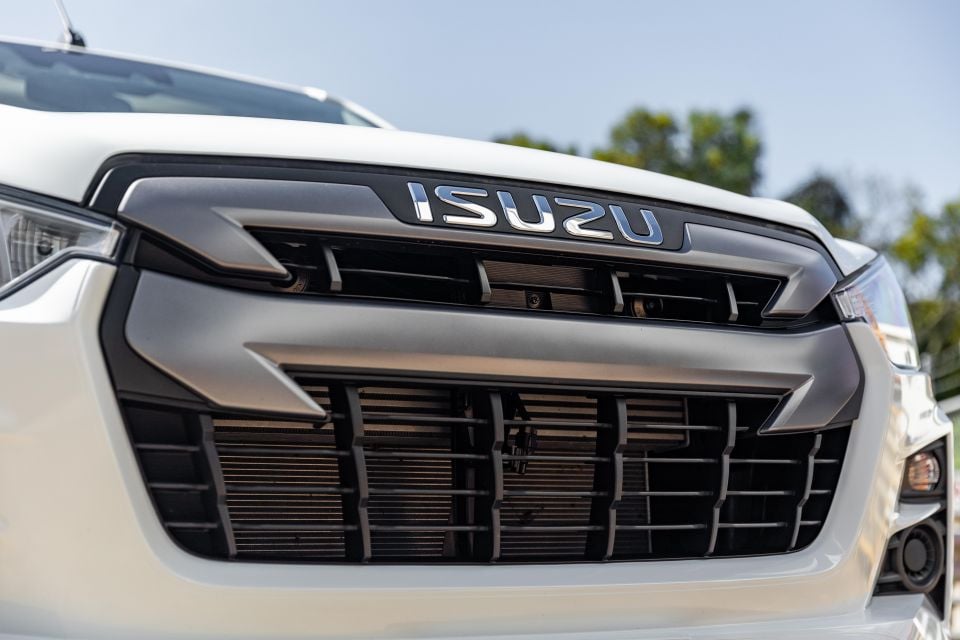
All D-Max models are covered by a six-year, 150,000km warranty.
Servicing costs are also lower for the 1.9-litre D-Max compared with the 3.0-litre, though intervals are the same at 12 months or 15,000km, whichever comes first.
Isuzu offers seven years of capped-price servicing, with the first seven services capped at $409, $429, $489, $529, $319, $619 and $429, or $3223 over seven years.
The 3.0-litre’s third and sixth services are price at $629 and $769, pushing the total cost over seven years up to $3513.
Only Mitsubishi can match Isuzu in offering seven years of capped-price servicing, and actually bests it by offering 10 years all up. Service within the Mitsubishi dealer network and you also enjoy a 10-year, 200,000km warranty.

Over seven years, a Triton costs $3793 to service, and has the same intervals as the D-Max. Despite its market-leader status, the HiLux has the shortest intervals in the segment – six months or 10,000km.
Over a loop consisting of inner-city, suburban and highway driving, we averaged 7.8L/100km. This increased to 8.9L/100km over the course of a week.
Isuzu’s combined cycle claim is 7.0L/100km, a whole 1.0L/100km less than the 3.0-litre single-cab chassis. That makes it among the thriftier 4×2 single-cab chassis utes, with rivals featuring the following claims:
Like 3.0-litre models, the 1.9-litre D-Max has a 76L fuel tank.
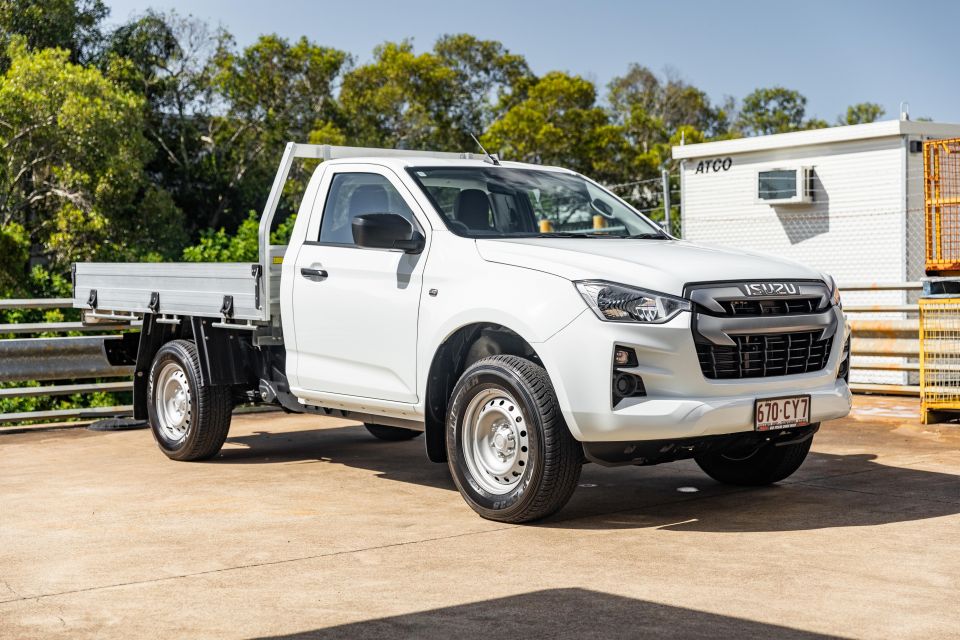
With a lower price, better fuel economy and slightly lower servicing costs than the 3.0-litre, the new entry-level D-Max makes a compelling case for fleets and owner operators.
It may be down on power, torque and towing capacity compared with the 3.0-litre but it doesn’t feel weedy on the road.
The key attributes of the D-Max remain: a logically laid out interior, comfortable seats, a long warranty, capped-price servicing, and the most comprehensive suite of safety technology of any ute at this price point.

The BT-50 XS is the same basic car at the same basic price but with LED headlights standard, though if you’re buying an official accessory tray the price gap widens in favour of the Isuzu.
The Toyota HiLux doesn’t offer a single cab-chassis 4×2 diesel with an auto in its range, while the Triton and Navara are thirstier and have less safety equipment – particularly the Mitsubishi.
Perhaps the greatest threat to the D-Max is the new Ford Ranger, which offers a list of safety equipment almost as long plus impressive in-car tech.
While the only recently launched D-Max is now no longer the newest kid on the block, there’s still a lot to recommend it for, even with the new, smaller engine. Its position on the sales podium is warranted.
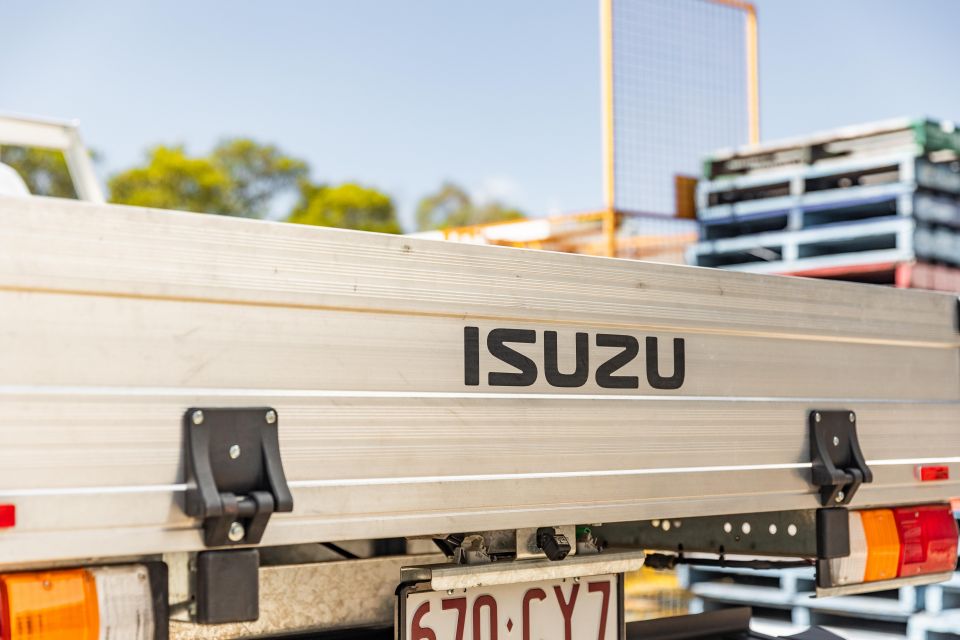
Click an image to view the full gallery.
MORE: Everything Isuzu D-Max
Where expert car reviews meet expert car buying – CarExpert gives you trusted advice, personalised service and real savings on your next new car.
William Stopford is an automotive journalist with a passion for mainstream cars, automotive history and overseas auto markets.


Damion Smy
3 Days Ago


Ben Zachariah
5 Days Ago


James Wong
11 Days Ago


Ben Zachariah
11 Days Ago
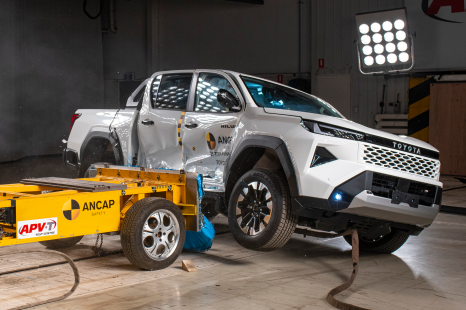

William Stopford
12 Days Ago
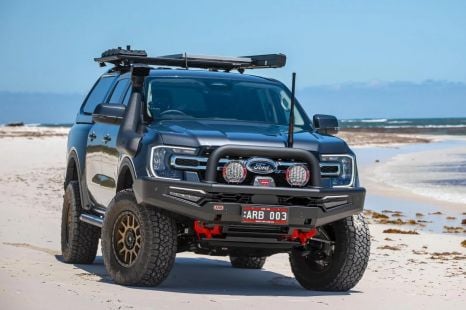

William Stopford
12 Days Ago